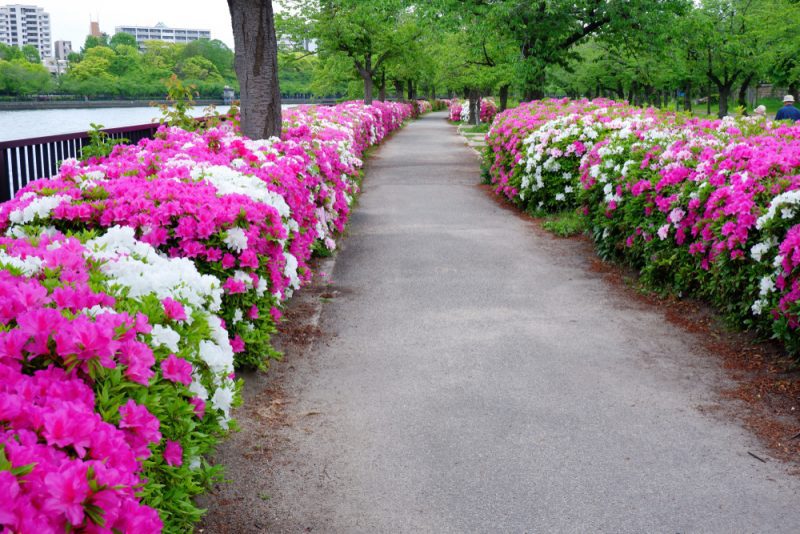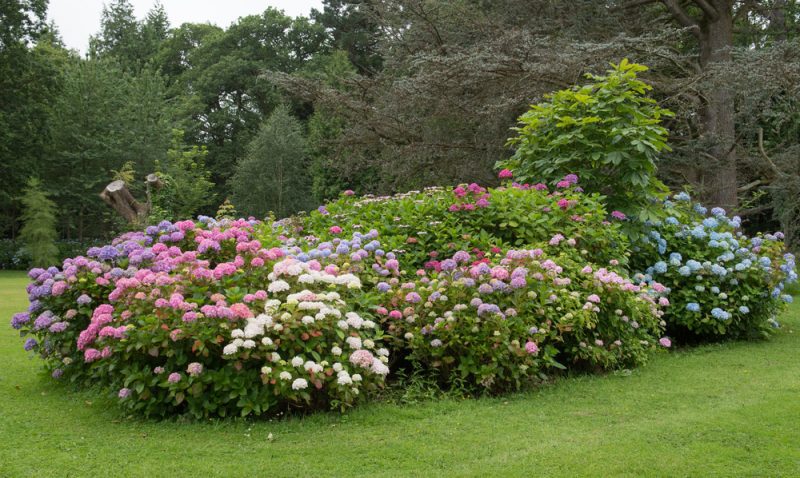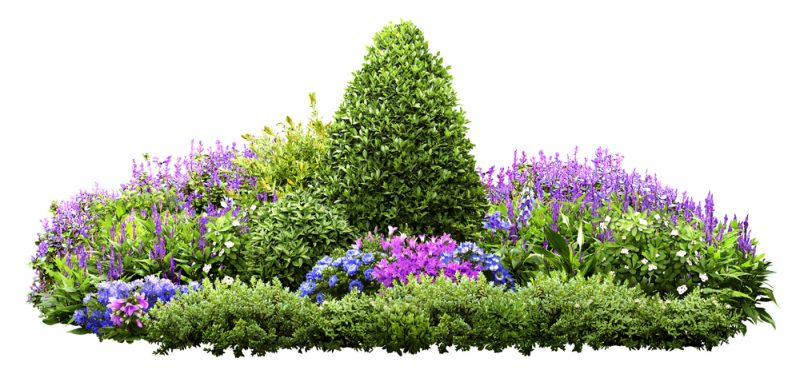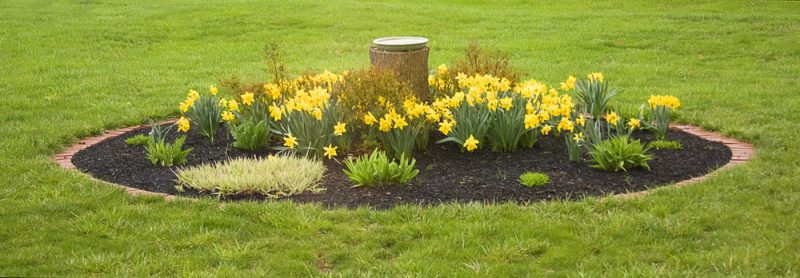How to Arrange Plants in a Flower Bed
How do you arrange plants in a flower bed to create cohesion instead of chaos?
To answer this question, it helps to look at nature. In natural habitats, plants tend to grow in drifts or clusters, with one group of plants weaving and mingling with the next. A handful of species are often repeated across an area, creating a visual rhythm across the landscape. In a garden, we can use the same principles, massing and repeating plant materials to create layers and patterns. When applying these concepts to the garden, we want to consider vertical as well as horizontal plant layers to create interest and visual balance across a planting.

Consider the Viewing Angle
Flower beds are used in many locations throughout the landscape. Planting beds may frame a patio or line the edges of the property. Island are often used to break up large lawns. Depending on the location of the flower bed relative to its surroundings, the garden might be designed to be viewed from more than one side. This is an important consideration when determining where to place plants in a garden.
Beds that are meant to be viewed from one viewing angle are typically designed with taller plant material toward the back and shorter plant material toward the front. They often have a backdrop, such as a fence, hedge, or the house. It is helpful to leave space between the back of the planting and the hedge, fence, or wall to allow for air circulation and ease of maintenance.
Beds that are designed to be viewed from more than one direction must be planted accordingly. Generally, taller plants are placed in the center, with progressively lower-growing plants spreading toward the edges of the bed. For both types of plantings, we want to avoid stepping down uniformly from tall to short plant, which will lend the planting an unnatural appearance. Instead, vary the plant height slightly both across the length of the bed and from front to back (or center to edges) as you step down.

Vertical Layers Ground a Planting
A garden with plants all the same height would be immensely boring. Varying the height of plants in a garden not only creates visual interest, but it also connects the garden to its surroundings. Consider a large home surrounded by only a lawn. The house looks like it is floating in a green sea, untethered. They same would be true if a bed of only low-growing annuals hugged the house. To anchor the house and its garden together, you need to step down vertically from the roof to the ground.
This is achieved by planting a series of vertical plant layers, beginning with the canopy or tree layer, and moving down through the shrub layer and herbaceous layer of annuals and perennials, until we reach the ground layer. The same approach can be used to step down from a fence, hedge, or neighboring woodland, or to add height to planting beds that do not have a backdrop, such as an island bed.

Highlight a Focal Point
Most plantings include a dominant plant that acts as a focal point or accent. Focal points do not necessarily have to be large or tall but must have some special interest throughout the seasons. Some examples include understory trees like Japanese maple or dogwood, or a flowering shrub such as a hydrangea. In a perennial bed, a billowing grass might serve as the accent piece. Accents are typically planted singly and are surrounded by supporting plants, mainly herbaceous perennials and shrubs. A large planting bed may have more than one accent, though one is typically more dominant.
Plants are used to complement or support the accent in a variety of ways. Often, an accent is underplanted with a low-growing perennial, annual, or groundcover that complements and highlights the accent, drawing attention to the showy feature. Shrubs and perennials might be planted as a backdrop or used to flank the accent on either side, using contrasting colors, textures, or forms to accentuate the focal point. These supporting plant materials are best planted in drifts or masses and can be repeated along the length of the planting to create visual rhythm.

Putting it All Together
Begin by siting your accent material first, which may be a small tree, shrub, or even a statue or birdbath. Your planting location and its surrounding will dictate the ideal location(s) for focal points and accents. Build around your accent(s), working with drifts and masses of plant material to create emphasis. Massing plant material prevents the garden from looking cluttered or confused by too many different types of plants.
When planting masses of shrubs, perennials, or other plant materials, avoid planting in linear blocks. Instead, vary the shapes and sizes of the masses, with some being long and narrow, others short and rounded or curved. Interweave and overlap masses to create an organic arrangement. Remember to vary plant height across the planting to create interest both in the horizontal and vertical plant layers.


You must be logged in to post a comment.